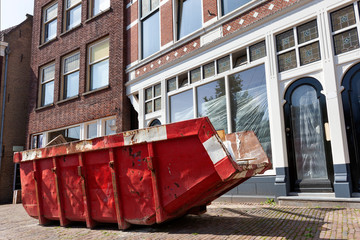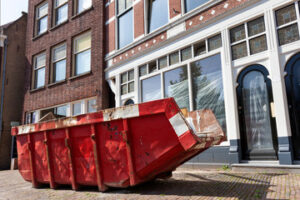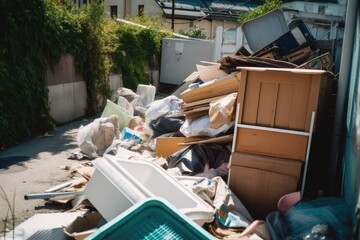When a fire damages your property, it also creates many other problems. Smoke, ash, and soot damage surfaces and contents and leave behind odors that can be difficult to remove.
To start the restoration process, technicians inspect and pre-test your home. This helps the client understand the severity of the damage and what repairs are necessary. Click here to Learn More.

House fires are scary, but they can also be costly if the damage is not properly restored. The damage assessment process begins after a property has been cleared as safe by local fire departments. During this phase, professionals use inspection checklists to determine the extent of the damage and what type of restoration is necessary.
The team must first secure the structure to prevent unauthorized access and weather-related damage. This usually involves installing a fence and boards to keep people out until the building is safe for them to enter. It can also mean sealing off parts of the damaged building if they were not affected by the fire and cleaning those areas to reduce cross-contamination from other areas that were.
Water damage is another major problem that can occur as a result of a house fire. The fire department may use a large amount of water to extinguish the flames, leaving puddles on floors and saturating walls and furniture. This can lead to rot and mildew problems, especially if not removed quickly enough.
It is also possible that the fire may have caused structural damage. This can include everything from broken windows to collapsed ceilings. Fire damage restoration specialists will inspect all areas to determine the extent of the damage and the best course of action.
After the initial damage assessment is complete, the next step involves cleaning and deodorizing the affected area. This is done to remove any smoke and soot stains as well as any unpleasant odors that may have been left behind. In some cases, this process will involve removing carpets and replacing them with new ones. It will also involve clearing out any standing water and drying out the remaining building materials.
The cleaning process is one of the most labor-intensive parts of fire damage restoration. It requires removing all the soot and smoke stains from surfaces throughout your home, and the professionals use advanced equipment to do so. They also remove any lingering contaminants from the air. These include ash, soot, and chemicals from the extinguishing agents used to put out the fire. They may also need to clean mold and mildew caused by water from the fire department’s hoses.
The team will take an inventory of your belongings to determine if they can be saved. If not, they’ll be removed and stored in a secure area until they can be restored. To protect the items that are salvageable, the technicians will sanitize all porous materials in your home, including walls, floors, and ceilings. They will also clean all appliances and furniture to eliminate any leftover toxins. They can also use negative air fans to improve air quality and help prevent further damage.
If there’s any remaining odors, the technicians will use thermal fogging and ozone generators. They work by creating negative pressure to remove contaminants from the air, and they’ll use oxidizing agents to eliminate the smells of smoke in your fabrics.
Most of the time, a house fire will result in water damage as well, and the fire restoration professionals will need to remediate this. They’ll use water removal equipment like truck-mounted or portable extractors, wet/dry vacuums, and submersible pumps to get rid of the water and moisture. Then, they’ll dry the affected areas with dehumidifiers and industrial-quality air movers. This part of the restoration can take weeks, if not months, depending on the extent of the damage and how wet the materials are.
A fire isn’t just dangerous for its contents and structure; the lingering residues left behind by soot and smoke can be harmful to your health, as well. Homeowners may attempt to clean up this damage with a bottle of degreaser and a dust mask, but it’s important to leave this job to professionals who have the right equipment and techniques for safe, thorough cleaning.
Water Removal and Drying – If water was used to extinguish the fire, restoration experts will use air movers and dehumidifiers to extract this moisture and ensure that the building is completely dry before proceeding with cleaning. They’ll also check for any saturation in drywall and insulation.
Soot and Smoke Removal – This stage involves deep cleaning to remove soot, smoke, and odor from all affected surfaces. This includes walls, ceilings, floors, and personal belongings. Restoration pros may use steam cleaning, pressure washing, and fogging equipment to complete this task.
Comprehensive Deodorization – This phase of the restoration process addresses structural odor situations including animal urine (basics and confined), vomit, blood, and death scene (universal precautions and bloodborne pathogen compliance). It also addresses oil/fuel odors in a commercial setting (tear gas, fuel oil, kerosene, chemical vapors), ozone deodorization, and general contamination odors.
After completing the cleanup and deodorization processes, restoration professionals will inspect all areas of the property for damage or problems that might have been caused by the fire or its aftermath. They’ll communicate this information to their customers, as well as the insurance adjuster handling the claim. Then, the restoration company will ask the customer to sign a certificate of satisfaction. This document tells the insurance company that the homeowner is satisfied with the work performed.
Fire damage is one of the most devastating property losses a home or business owner can experience. Even small house fires can leave substantial damage to personal belongings, structures and buildings. And while it’s not always possible to return a building back to its original state, fire restoration experts can help mitigate the damage and restore property.
The first step in the fire restoration process is assessing the damage. Once it’s safe to enter, professionals will use inspection checklists and other tools to evaluate what can be saved. They will determine which items must be discarded, what can be cleaned, and what needs to be rebuilt. This assessment can take anywhere from a few days for a minor fire to several months for larger, more extensive losses.
Once the inspection is complete, fire restoration experts will begin to clean up the damaged areas. This involves removing all indicators of smoke damage and cleaning surfaces such as walls, floors and ceilings. It may also include removing furniture and other items that can be saved. They will also address any water damage caused by firefighters putting out the fire and clean up any contaminated materials.
This can be a daunting task, and it’s important to hire a professional team with years of experience. A professional fire damage restoration company will be able to provide an estimate of the costs involved and work with insurance companies to ensure the process is completed as quickly as possible. They will also be able to work with other trades to speed up the rebuilding and repairs process. Leon Altomonte is a content writer for SafetyCulture, which provides a wide variety of tools to help businesses manage their safety programs.
Fire damage can be one of the most devastating natural disasters a home or business experiences. It destroys prized possessions and leaves families without a place to live or businesses with no place to trade. The destruction does not stop when the flames have been extinguished, however, as many properties are left with extensive damage from smoke and soot as well as water used to put out the fire. It is essential to seek prompt restoration services to limit the amount of damage caused by a fire.
The first step in the fire restoration process is a property assessment. This is when the professionals enter the building or structure once it has been deemed safe to do so by firefighters and use inspection checklists to assess the type of damage that has occurred. During this assessment, technicians determine which items can be saved and what needs to be discarded.
Cleaning up is the next step in fire restoration. This involves removing any remaining soot and smoke stains from surfaces such as walls, floors, ceilings, rugs, furniture and more. It also involves cleaning and sanitizing areas that have been exposed to water from firefighting efforts. Deodorizing agents are also used to remove any lingering odors from the property.
After the restoration company has completed its work, they will walk through the property with the homeowner to ensure that everything meets their satisfaction. They will then send a certificate of satisfaction to the homeowner and their insurance provider or source handling the restoration expenses. When looking for a fire restoration company, be sure to research each option and ask about their full range of services. Avoid fly-by-night services that may not do the job thoroughly or completely.




